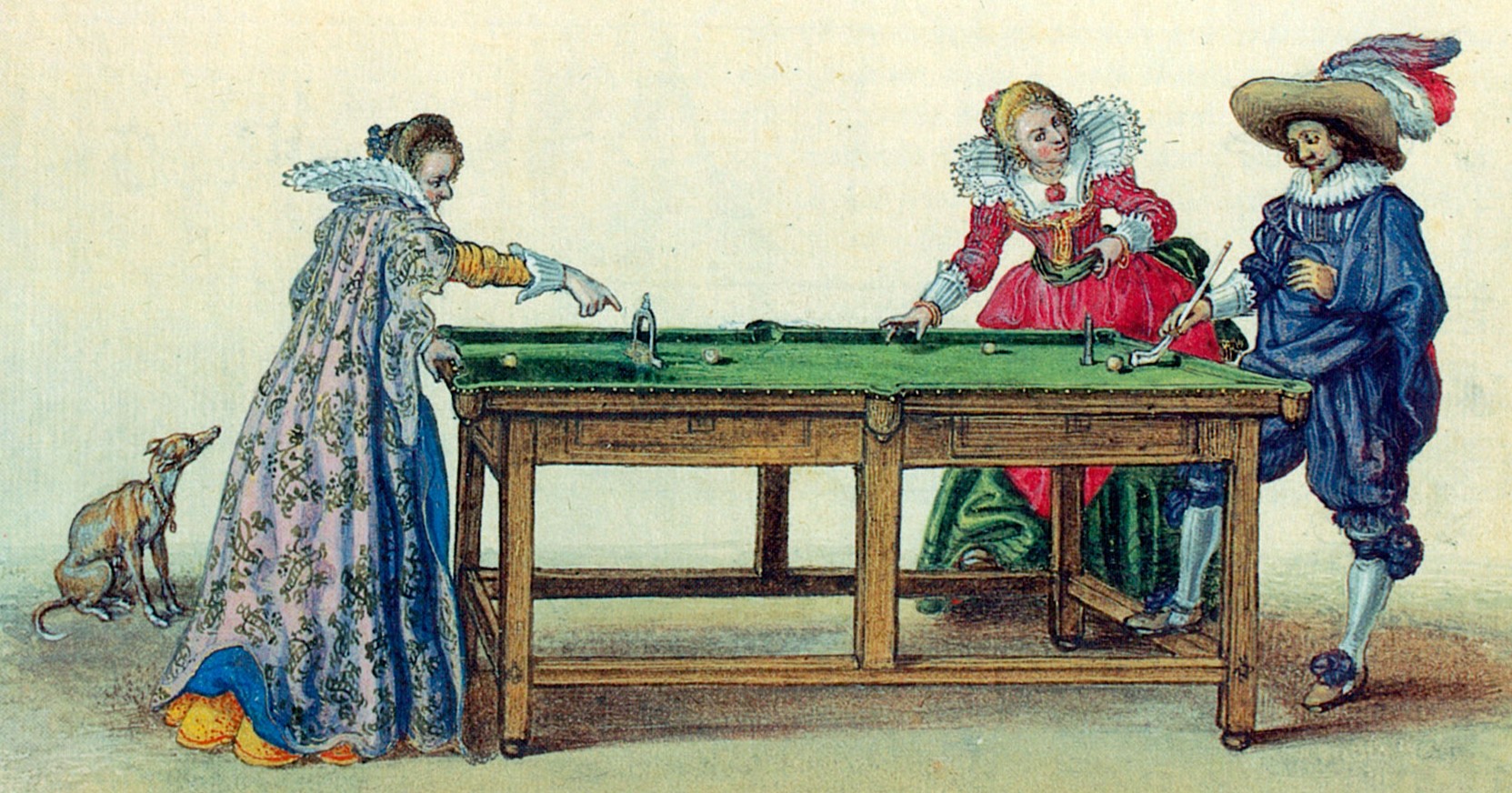 Pirates and Privateers Pirates and Privateers
The History of Maritime
Piracy
Cindy Vallar, Editor
& Reviewer
P.O. Box 425,
Keller, TX 76244-0425
    
In Memoriam
Lady Luck and Other Amusements
by Cindy Vallar
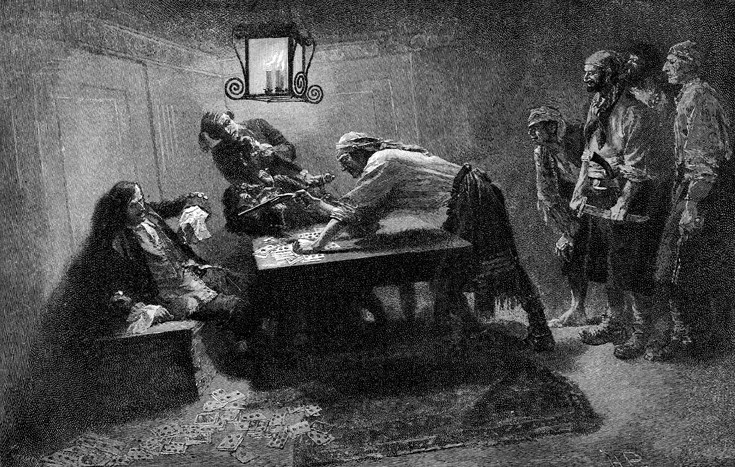
Card game interrupted
"Capture of the Galleon" by Howard Pyle, 1887
(Source: Dover's Pirates)
Drinking
and eating were not the only ways in which pirates
had fun. They also enjoyed gaming, an old word for
gambling. Just like the drinking of spirits, there
was a danger for both ship and crew if the pirates
did so at sea because tempers could flare for those
upon whom Lady Luck did not shine. Since teamwork
was essential, the pirates often had something to
say about gambling in their articles of agreement.
One item that Captain
Peter Solgard of HMS Greyhound discovered
aboard Charles Harris’s ship was the code under
which Edward Low
sailed. The proceedings of the trials that resulted
in convictions for Harris and twenty-six others was
printed by Samuel
Kneeland in 1723, and included the captured Articles of
Agreement. The fifth one was
He that
shall be found Guilty of Gaming, or playing at
Cards, or Defrauding or Cheating one another to
the Value of a Royal Plate, shall suffer what
Punishment the Captain and majority of the
Company shall think fit. (Tryals of
Thirty-six, 3:191)
Bartholomew Roberts’s
code forbade playing cards or dice if gambling for
money was involved. A specific punishment wasn’t
given, but the articles agreed upon by the pirates
aboard John Phillips’ ship did.
If any Man
shall steal any Thing in the Company, or game to
the Value of a Piece of Eight, he shall be
maroon’d or shot. (Defoe, 342)
But playing on land was
another matter. Gambling could involve cards, dice,
or almost any object a pirate could think to wager
on.
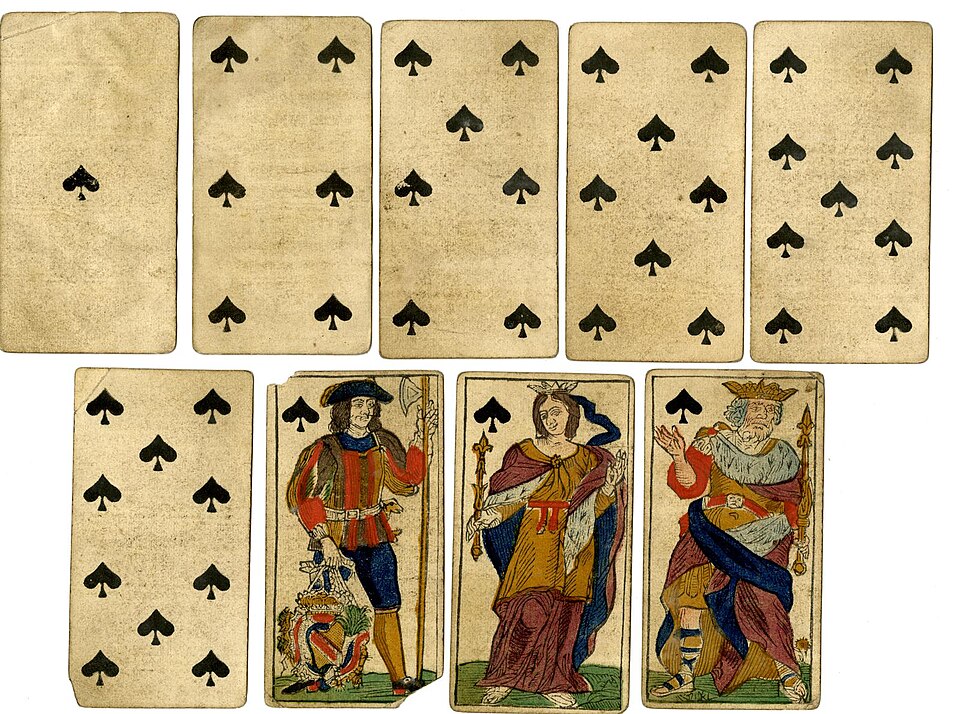 Cards
of the past differed from cards used today. Those
that pirates played with didn’t have numbers on
them. The standard deck during the buccaneering era
was known as the “French” deck. It was comprised of
fifty-two cards and four suits (clubs, diamonds,
hearts, and spades). The kings, queens, and jacks or
knaves were single faces, rather than having the
figure on one end and the mirror opposite on the
other. The remaining cards merely showed the suits.
(For example, the ten of spades just had ten spades
on it. A two of hearts had only two hearts but no
numbers on it.) Another difference was the size of
the cards. They were larger and players needed both
hands to hold them. Cards
of the past differed from cards used today. Those
that pirates played with didn’t have numbers on
them. The standard deck during the buccaneering era
was known as the “French” deck. It was comprised of
fifty-two cards and four suits (clubs, diamonds,
hearts, and spades). The kings, queens, and jacks or
knaves were single faces, rather than having the
figure on one end and the mirror opposite on the
other. The remaining cards merely showed the suits.
(For example, the ten of spades just had ten spades
on it. A two of hearts had only two hearts but no
numbers on it.) Another difference was the size of
the cards. They were larger and players needed both
hands to hold them.
Pirates had their choice when it came to specific
games to play with the cards. L’Ombre
had several variations. The primary version was
“called Renegado, at which three only can play, to
whom are dealt Nine Cards apiece.” (Cotton, 72) Aluette,
also known as La Vache (the cow), was
popular among French buccaneers and required a
special deck of forty-eight cards to play. Other
popular card games included All-Fours, Ruff and
Honours (also known as Slamm), Bone-Ace,
Lanterloo,
Maws (a
favorite since William Shakespeare’s days), Noddy
(a forerunner of cribbage), and One-and-Thirty
(similar to blackjack except the goal was to reach
thirty-one rather than twenty-one). Samuel
Bellamy and Paulsgrave Williams were known to
play cards, backgammon, and checkers.
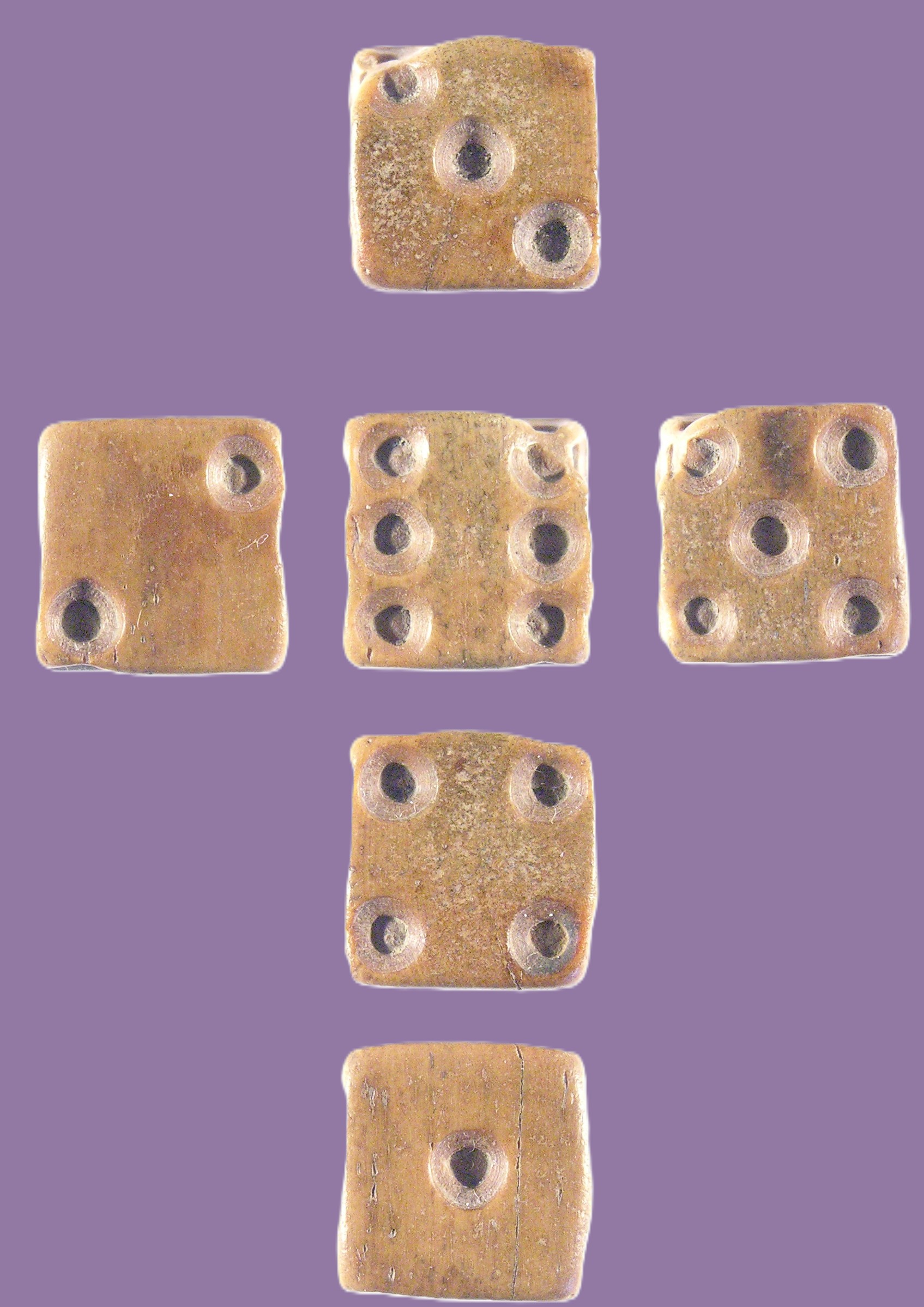 As
for dice, Hazard
“speedily makes a Man or undoes him; in the
twinkling of an eye either a Man or a Mouse.” It was
“play’d but with two Dice, but there may play at it
as many as can stand round the largest round Table.”
(Cotton, 122) It was addictive, “for when a man
begins to play he knows not when to leave off; and
having once accustom’d himself to play at Hazzard,
he hardly ever after minds any thing else . . . .”
(Cotton, 125) As
for dice, Hazard
“speedily makes a Man or undoes him; in the
twinkling of an eye either a Man or a Mouse.” It was
“play’d but with two Dice, but there may play at it
as many as can stand round the largest round Table.”
(Cotton, 122) It was addictive, “for when a man
begins to play he knows not when to leave off; and
having once accustom’d himself to play at Hazzard,
he hardly ever after minds any thing else . . . .”
(Cotton, 125)
Those who liked to take chances, deceive others, and
play the odds might partake of a game of Liar’s Dice,
which involved dice and cups. French buccaneers
liked to play passe-dix, which their English
counterparts referred to as “passage.”
Two players, such as Sieur Michel de Grammont (a
buccaneer captain) and Jean d’Estrées (a French
count and an admiral in la marine royale),
played on Petit-Goâve. They took turns throwing
three dice, and needed a score greater than ten to
win.
Board games were also popular. One involving dice
was Goose,
which was invented in Italy and gifted to the
Spanish king. An ancient strategy game that remained
popular was Nine Men’s
Morris. It could be played on a board, or any
surface on which the board could be drawn. French
pirates enjoyed playing Shut the
Box; other pirates played Sweat Bloth, where a
bandana served as the board.
When recovering artifacts from Blackbeard’s Queen
Anne’s Revenge and Sam Bellamy’s Whydah,
marine archaeologists found
a few lead
pieces flattened and shaped into gaming
chips of square or round shapes. Six
square-shaped pieces weigh between 12 and 32
grams, and two are incised with an X on one
face. One of those was done using the
wrigglework technique similar to that seen on
cannon aprons. Dozens of similarly shaped and
scored gaming pieces were found on the pirate
ship Whydah. Checkers, sennet, and
draughts were popular board games of this era.
(Wilde-Ramsing, 139)
Billiards
was also a popular pastime, especially during the
time of the buccaneers. Several Port Royal taverns,
such as the George and the Feathers, had separate
rooms where this game was played.
Many of the games that Asian pirates (men, women,
and children) played involved wagering. Players of fan-tan had to guess
how many coins, beans, or some other objects
remained after the pile was disseminated by fours. Mahjong
and quail fighting were also popular. Gambling
allowed the pirates to add to their ill-gotten
gains, but losers often hocked their clothes just to
keep playing. For some, the habit was even worse, as
shown in this boatwoman’s song:
Oh Heaven!
Why I am a gambler’s wife I simply cannot see,
For a gambler is
a man of very low degree;
Other people are
happy and gay,
But he roams in
the gambling den all day;
He goes and
leaves me many a lonely night,
When I wake up
he is out of sight;
Three girls are
sold into slavery by thee,
Your patrimony
is wasted I clearly foresee. (Antony,
145-146)
It wasn’t just money that
was wagered. Some games involved drinking. One group
of pirates bet on how much each could drink. They
became so inebriated that they lost consciousness,
which allowed their captives to gain the upper hand.
One lesson that Chinese pirates taught to new
recruits was to show no fear when danger threatened.
In 1809, Richard
Glasspoole spent three months as the “guest”
of Chinese pirates and witnessed one such incident.
[W]hilst
the Ladrone fleet was receiving a distant
cannonade from the Portuguese and Chinese, the
men were playing cards upon deck, and in a group
so amusing themselves, one man was killed by a
cannon shot; but the rest, after putting the
mangled body out of the way, went on with their
game, as if nothing of the kind had happened.
(Further, 45)
In Asia, religious
festivals broke the monotony of everyday life. The
pirates could relax and, if on land, enjoy parades
and performances such as dramas, comedies, and
puppet shows. They might sing or dance, or renew old
friendships.
Singing and storytelling were universal
entertainments. Although books made good cannon
fodder on most pirate ships or were deemed of no use
and tossed overboard, a few pirates liked to read.
Among the items that Stede
Bonnet took with him when he boarded Revenge
was a library. So did Guo Podai, who liked to
read poetry and historical romances.
Musicians gave concerts or accompanied mates who
sang familiar songs.
“Ballads and bawdy drinking songs . . . told stories
of love, adventures, battles, political strife, and
humorous tales.” (Schenawolf) Also popular were
religious songs. Some pirates enjoyed singing some
of the ballads
written about their fellow marauders of the sea,
such as Henry Every
and Blackbeard.
One of the articles under which those who followed
Bartholomew Roberts sailed pertained to music.
The
Musicians to have Rest on the Sabbath Day, but
the other six Days and Nights, none without
special Favour. (Defoe, 212)
In essence, those who
played an instrument didn’t have to play on Sunday,
but if martial airs were required to instill a
fighting spirit in the men, or if the men simply
wanted to be entertained, the musicians were
expected to do so any time of the day or night. In
the fall of 1721, Roberts and his men captured a
French warship. One captive was the governor of
Martinique, who had dared to pursue Roberts rather
than submit to his earlier demands. Such defiance
deserved punishment in the eyes of the pirates, so
the governor ended up swinging from a yardarm “while
the crew drank their fill of plundered spirits and
took turns dancing to the tunes of the exhausted
musicians tooting dented brass instruments.”
(Sutton, 81)
For some, having plunder filling their pockets
allowed them to go shopping. Clothes, hats, shoes,
and guns, as well as pipes of ivory, pewter, or red
clay, were favorite purchases. Their wealth
permitted them to buy what they otherwise would
never have afforded. To their way of thinking if
someone of the upper-crust could buy it, so could
they.
Then there were the temptations of the flesh and
seductions of escape . . . but those are topics for
another day.
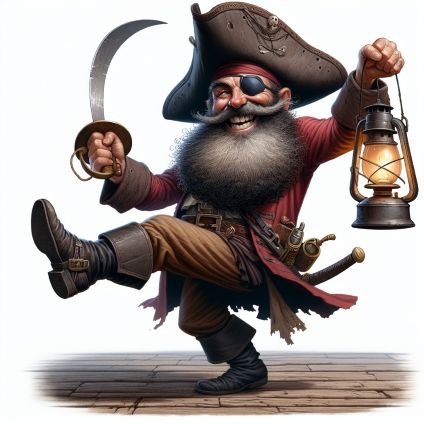 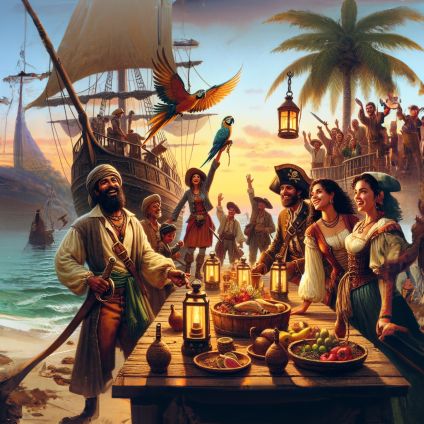
. . . To be continued
Resources:
“America
and West Indies: March 1678,’ in Calendar
of State Papers Colonial, America and West
Indies: Volume 10,1677-1680 edited by W.
Noel Sainsbury and J. W. Fortescue. London, 1896,
220-231 (March-Sept. St. Christopher’s. 645.)
“America
and West Indies: August 1698, 22-25,’ in Calendar
of State Papers Colonial, America and West
Indies: Volume 16,1697-1698 edited by J. W.
Fortescue. London, 1905, 399-406 (Aug. 25. 771.).
“America
and West Indies: June 1718,” in Calendar of
State Papers Colonial, America and West Indies:
Volume 30, 1717-1718 edited by Cecil Headlam.
London, 1930, 264-287. (June 18. Charles Towne,
South Carolina. 556.).
Andrade, Tonio.
Lost Colony: The Untold Story of China’s First
Great Victory Over the West. Princeton,
2011.
Antony, Robert J. Like
Froth Floating on the Sea: The World of Pirates
and Seafarers in Late Imperial China.
Institute of East Asian Studies, University of
California Berkley, 2003.
Appleby, John C. Women
and English Piracy 1540-1720: Partners and
Victims of Crime. Boydell, 2013.
Ashmead, Henry Graham.
History
of Delaware County, Pennsylvania. L.
H. Everts & Co., 1884.
Bahadur, Jay. The Pirates of Somalia: Inside
Their Hidden World. Pantheon Books, 2011.
Bialuschewski, Arne. Raiders
and Natives: Cross-cultural Relations in the Age
of Buccaneers. University of Georgia, 2022.
Bold in Her
Breeches: Women Prostitutes Across the Ages
edited by Jo Stanley. Pandora, 1996.
Borvo, Alain. “Discover
Aluette, the Game of the Cow,” Traditional
Tarot (21 July 2021).
Bradley, Peter T. Pirates
on the Coasts of Peru 1598-1701.
Independently published, 2008.
Brooks, Baylus C. Quest
for Blackbeard: The True Story of Edward Thache
and His World. Independently published,
2016.
Brown, Edward. A
Seaman’s Narrative of the Adventures During a
Captivity Among Chinese Pirates, on the Coast
of Cochin-China. Charles Westerton,
1861.
Burg, B. R. “The
Buccaneer Community” in Bandits at Sea: A
Pirates Reader edited by C. R. Pennell. New
York University, 2001, 211-243.
Choundas, George. The Pirate Primer: Mastering
the Language of Swashbucklers and Rogues.
Writer’s Digest, 2007.
Codfield, Rod. “Tavern
Tales: 1708 Letter,” Historic London
Town & Gardens (2 April 2020).
Cotton, Charles. The
Compleat Gamester. London: Charles Brome,
1710.
Croce, Pat. The
Pirate Handbook. Chronicle Books, 2011.
Dampier, William. A New
Voyage Round the World vol. 1. London:
James Knapton, 1699.
Defoe, Daniel. A
General History of the Pyrates edited by
Manuel Schonhorn. Dover, 1999.
Duffus, Kevin P. The
Last Days of Black Beard the Pirate. Looking
Glass Productions, 2008.
Eastman, Tamara J., and Constance Bond. The
Pirate Trial of Anne Bonny and Mary Read.
Fern Canyon Press, 2000.
Ellms, Charles. The
Pirates Own Book. 1837.
Esquemeling, John. The Buccaneers of America.
Rio Grande Press, 1684.
Exquemelin, Alexander
O. The Buccaneers of America translated by
Alexis Brown. Dover, 1969.
“FAQs:
Beverages,” Food Timeline edited by
Lynne Olver (30 November 2021).
Ford, Michael. “The
Attack of the ‘Last Great Pirate’ – Benito De
Soto, Wellington’s Treasure and the Raid of the
‘Morning Star,’ Military History Now
(21 June 2020).
Ford, Michael E. A. Hunting
the Last Great Pirate: Benito de Soto and the
Rape of the Morning Star. Pen & Sword,
2020.
A Full
and Exact Account of the Tryal of the Pyrates
Lately Taken by Captain Ogle. London:
J. Roberts, 1723.
Further
State of the Ladrones on the Coast of China.
Lane, Darling, and Co., 1812.
Geanacopulos, Daphne Palmer. The Pirate Next
Door: The Untold Story of Eighteenth Century
Pirates’ Wives, Families and Communities.
Carolina Academic, 2017.
Gosse, Philip. The Pirates’ Who’s Who. Rio
Grande Press, 1924.
Gutzlaff,
Charles. Three
Voyages Along the Coast of China in 1831,
1832, & 1833. Frederick, Westley
and A. H. Davis, 1834.
Hacke, William. Collection
of Original Voyages. London: James
Knapton, 1699.
Hailwood, Mark. “‘Come
hear this ditty’: Seventeenth-century
Drinking Songs and the Challenges of Hearing the
Past,” The Appendix (10 July 2013).
Hardy, Thomas. “Drinking
Song,” Poetry Nook.
Hartsmar, Markus. “Oscar
Wilde, 1854-1900,” Absinthe.se.
Hughes, Ben. Apocalypse
1692: Empire, Slavery, and the Great Port Royal
Earthquake. Westholme, 2017.
Jacob, Robert. “Popular
Games from the Golden Age!” Robert Jacob.
Jamaica Rose. “Games
Pirates Played,” Pirates Magazine (Summer
2006), 53-55.
Jamaica Rose. “Pirate
Pastimes & Pleasures,” Pirates Magazine
(Summer 2006), 49-51.
Jameson, John Franklin.
Privateering
and Piracy in the Colonial Period:
Illustrative Documents. Macmillan, 1923.
Johnson, Charles. A General
History of the Robberies and Murders of the Most
Notorious Pyrates. London: C. Rivington,
1724.
Kehoe, M. “Booze,
Sailors, Pirates and Health in the Golden Age of
Piracy,” The Pirate Surgeon’s Journals:
Tools and Procedures.
Kehoe, M. “Christmas
Holidays at Sea in the Golden Age of Piracy,”
The Pirate Surgeon’s Journals: Tools and
Procedures.
Kehoe, Mark C. “Fresh
Water at Sea in the Golden Age of Piracy,” The
Pirate Surgeon’s Journals.
Kehoe, M. “Tobacco
and Medicine During the Golden Age of Piracy,”
The Pirate Surgeon’s Journals: Tools and
Procedures.
Kelleher, Connie. The
Alliance of Pirates: Ireland and Atlantic Piracy
in the Early Seventeenth Century. Cork
University, 2020.
King
James Bible Online.
Labat, Jean-Baptiste. The
Memoirs of Père Labat, 1693-1705
translated and abridged by John Eaden.
Routledge, 2013.
Lane, Kris E. Pillaging the Empire:
Piracy in the Americas, 1500-1750. M. E.
Sharpe, 1998.
Lee, Robert E. Blackbeard
the Pirate: A Reappraisal of His Life and Times.
John F. Blair, 2002.
“Liar’s
Dice,” Awesome Dice.
Little, Benerson. The
Buccaneer’s Realm: Pirate Life on the Spanish
Main, 1674-1688. Potomac Books, 2007.
Little, Benerson. “Of
Buccaneer Christmas, Dog as Dinner, & Cigar
Smoking Women,” Swordplay &
Swashbucklers (1 January 2017).
Little, Benerson. The
Sea Rover’s Practice: Pirate Tactics and
Techniques, 1630-1730. Potomac Books, 2005.
Marley, David F. Pirates of the Americas
Volume 1 1650-1685. ABC Clio, 2010.
Marley, David F. Pirates
of the Americas Volume 2 1686-1725. ABC
Clio, 2010.
Mather, Increase. Wo to
Drunkards (second edition). Boston:
Timothy Green, 1712.
McAlister, Zac. “What Is
Black Strap Rum,” Booze Bureau.
Neumman, Charles Fried. History
of the Pirates Who Infested the China Sea,
from 1807 to 1810. Oriental
Translation Fund, 1831.
Parlett, David. “Historic
Card Games,” Games & Gamebooks.
2022.
Pawson, Michael, and
David Buisseret. Port Royal, Jamaica.
University of the West Indies, 2000.
“Pirate
Potheads? On Drugs and Tobacco in the Golden Age
of Piracy,” Gold and Gunpowder (8
December 2023).
The Pirate’s
Pocket-Book edited by Stuart Roberston.
Conway, 2008.
Pirates in Their Own
Words: Eye-witness Accounts of the ‘Golden Age’
of Piracy, 1690-1728 edited by E. T. Fox.
Fox Historical, 2014.
“The Plank
House,” The Marcus Hook Preservation
Society.
Preston, Diana and
Michael. A Pirate of Exquisite Mind: Explorer,
Naturalist, and Buccaneer: The Life of William
Dampier. Walker & Co., 2004.
Pruitt, Sarah. “How
Christmas Was Celebrated in the 13 Colonies,”
History (5 October 2023).
Rogers, Woodes. A
Cruising Voyage Round the World.
Cassell and Company, 1928.
Sanders, Richard. If a Pirate I must be . . .
: The True Story of “Black Bart,” King of the
Caribbean Pirates. Skyhorse, 2007.
Sanna, Antonio.
“Yo-ho-ho and a bottle of rum”: Representations of
Drunkenness in Literary and Cinematic Narratives
on Pirates,” Pirates in History and Popular
Culture edited by Antonio Sanna. McFarland,
2018, 120-131.
Schenawolf, Harry. “Music in
Colonial America,” Revolutionary War
Journal (21 August 2014).
Sharp, Bartholomew. Voyages
and Adventures of Capt. Barth. Sharp. P. A.
Esq., 1684.
Snelders, Stephen. “Smoke on
the Water: Tobacco, Pirates, and Seafaring
in the Early Modern World,” Intoxicating
Spaces: The Impact of New Intoxicants on Urban
Spaces in Europe, 1600-1850 (9 December
2019).
Snelgrave, William. A
New Account of Some Parts of Guinea, and the
Slave Trade. London: James, John, and Paul
Knapton, 1734.
Struzinski, Steven. “The
Tavern in Colonial America,” The
Gettysburg Historical Journal volume 1,
article 7 (2002), 29-38.
Sutton, Angela C. Pirates
of the Slave Trade: The Battle of Cape Lopez and
the Birth of an American Institution.
Prometheus, 2023.
Talty, Stephan. Empire of Blue Water: Captain
Morgan’s Great Pirate Army, the Epic Battle for
the Americas, and the Catastrophe That Ended the
Outlaws’ Bloody Reign. Crown, 2007.
Thomson, Keith. Born
To Be Hanged: The Epic Story of the Gentlemen
Pirates Who Raided the South Seas, Rescued a
Princess, and Stole a Fortune. Little,
Brown, 2022.
Todd. “Daily
Life of the American Colonies: The Role of
the Tavern in Society,” The Witchery Arts
(3 April 2015).
Todd, Janet. “Carleton,
Mary (1634x42-1673),” Oxford Dictionary of
National Biography. Oxford University, 2004.
The
Tryals of Captain John Rackham, and Other
Pirates. Jamaica: Robert Baldwin,
1721.
The
Tryals of Major Stede Bonnet, and Other
Pirates. London: Benj. Cowse, 1719.
“Tryals of Thirty-six
Persons for Piracy” in British Piracy in the
Golden Age: History and Interpretation,
1660-1730 edited by Joel H. Baer. Pickering
& Chatto, 2007, 3:167-192.
Turner, John. Sufferings
of John Turner, Chief Mate of the Country
Ship, Tay. Thomas Tegg, 1810.
Vallar, Cindy. “Pirates
and Music,” Pirates and Privateers
(18 September 2013).
Watson, John F. Annals
of Philadelphia and Pennsylvania in the Olden
Time, vol. 2. John Penington and Uriah
Hunt, 1844.
Wafer, Lionel. A New
Voyage and Description of the Isthmus of
America. London: James Knapton, 1699.
Wilde-Ramsing, Mark U.,
and Linda F. Carnes-McNaughton. Blackbeard’s
Sunken Prize: The 300-Year Voyage of Queen
Anne’s Revenge. University of North Carolina,
2018.
Winstead, Dave. “1/24/2024
Is ‘Eat, Drink, And Be Merry’ A Biblical
Concept?” FaithByTheWord (24 January
2024).
Yates, Donald. “Colonial
Drinks, 1640-1860,” Bottles and Extras
(Summer 2003), 39-41.
While I worked on
this article, my father passed away.
He shared his affinity for the water
and boats with me in my youth, which
helped awaken a desire to write about
pirates. This article is for him. Now
that you are at peace and without
pain, Dad, may you eat, drink, and be
merry.

Lee Aker
Rest in peace |

Copyright ©2024 Cindy
Vallar
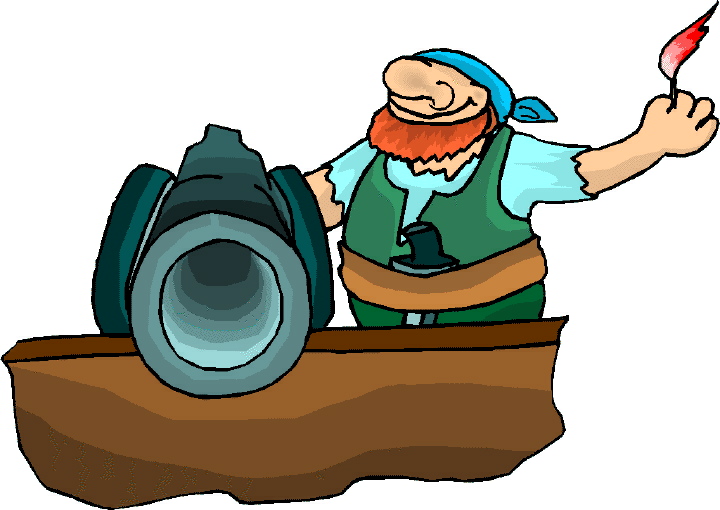
Click to contact me
Background image compliments
of Anke's Graphics |

 Cards
of the past differed from cards used today. Those
that pirates played with didn’t have numbers on
them. The standard deck during the buccaneering era
was known as the “French” deck. It was comprised of
fifty-two cards and four suits (clubs, diamonds,
hearts, and spades). The kings, queens, and jacks or
knaves were single faces, rather than having the
figure on one end and the mirror opposite on the
other. The remaining cards merely showed the suits.
(For example, the ten of spades just had ten spades
on it. A two of hearts had only two hearts but no
numbers on it.) Another difference was the size of
the cards. They were larger and players needed both
hands to hold them.
Cards
of the past differed from cards used today. Those
that pirates played with didn’t have numbers on
them. The standard deck during the buccaneering era
was known as the “French” deck. It was comprised of
fifty-two cards and four suits (clubs, diamonds,
hearts, and spades). The kings, queens, and jacks or
knaves were single faces, rather than having the
figure on one end and the mirror opposite on the
other. The remaining cards merely showed the suits.
(For example, the ten of spades just had ten spades
on it. A two of hearts had only two hearts but no
numbers on it.) Another difference was the size of
the cards. They were larger and players needed both
hands to hold them.  As
for dice,
As
for dice, 